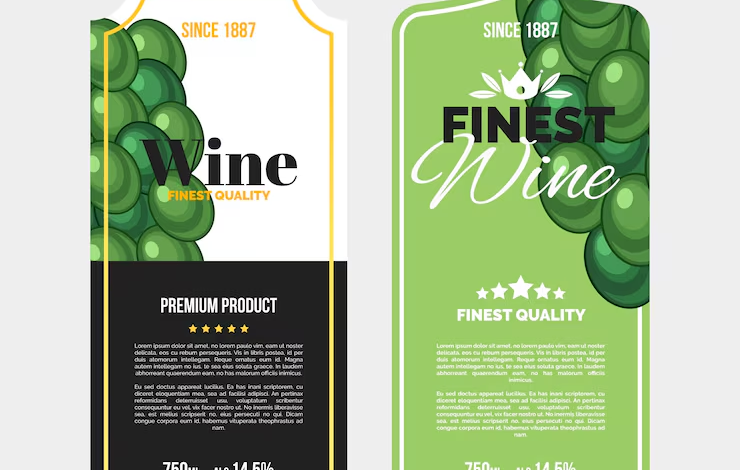Custom Labels That Work as Hard as Your Brand Does

Your product sits on a shelf next to twenty others. Maybe more. The packaging looks fine. The formula inside is solid. But here’s the thing: nobody picks it up. That label you thought was “good enough”? It’s costing you in zero sales right now.
Labels do more than stick to bottles and jars. They make split-second decisions for customers who barely glance at products before moving on. If your custom labels don’t grab attention at that moment, you’ve already lost the game
Why most custom labels fail before they even try
Walk through any retail space and you’ll see the same mistakes repeated. Faded colours that looked great in the design file but washed out in print. Text that’s too small to read from arm’s length. Materials that peel at the edges after one trip through cold storage.
These aren’t small issues. They’re silent brand killers.
Your customers won’t tell you the label puts them off. They’ll just buy something else. And that competitor with the crisp, professional labelling gets the sale you should have had.
The pressure hits harder when you’re launching something new. You’ve spent months perfecting the product. The formula is right. The pricing makes sense. Then you slap on a label that screams “budget operation” and wonder why people don’t take you seriously.
See also: How to Choose the Right Home Automation Devices for Your Lifestyle
What actually makes a label work
Start with durability. Your beautiful design means nothing if it smudges in transit or curls up in a fridge. Premium finishes aren’t just about looking expensive. They protect your brand identity from moisture, handling, and temperature shifts that destroy cheaper materials.
Paper labels have their place. They work fine for dry goods in controlled environments. But put them on a beverage that sits in ice at an event? You’ll watch your brand literally fall apart in front of customers.
Polypropylene changes that equation. Water rolls off. Condensation doesn’t faze it. The label that goes on is the label that stays sharp through the entire product lifecycle.
Printing quality separates forgettable products from memorable ones. Colours need to pop without looking garish. Typography needs to be readable without shouting. Getting that balance right means working with equipment and expertise that most overseas suppliers simply don’t have.
The local advantage you’re probably ignoring
Ordering labels from overseas feels smart on paper. Lower unit costs. Bulk pricing. Then reality sets in.
Lead times stretch from weeks to months. Quality control happens thousands of kilometres away from your eyes. When something goes wrong, and it will, you’re stuck managing time zones and language barriers while your product launch sits in limbo.
Sydney-based production flips this entirely. You order what you need when you need it. Proofs come back in days, not weeks. If something’s off, you’re talking to someone who can fix it before lunch, not someone reading your email twelve hours later.
Small batches become possible. Testing new designs doesn’t require committing to thousands of units. Seasonal products don’t leave you with obsolete inventory taking up warehouse space.
The supply chain chaos of recent years taught a lot of businesses this lesson the hard way. Those who relied on distant suppliers watched their products sit in shipping containers while competitors with local sources kept shelves stocked.
Self-service doesn’t mean going it alone.
Online ordering systems have changed how labels get made. You upload your design, pick your specifications, and place your order. No meetings. No back-and-forth. No sales calls that eat up your afternoon.
This works brilliantly if you know what you want. The tools are straightforward. Material options are clearly explained. Turnaround times are listed upfront.
But here’s where it gets interesting. Good self-service platforms build in the knowledge you’d normally get from a consultation without the hassle of scheduling one. The system guides you toward materials that suit your application. It flags potential issues with your file before you pay. You get professional results through a process that respects your time.
Templates help when you’re starting from scratch. Standard shapes and sizes mean you’re not reinventing the wheel. However, customisation options let you adjust until it feels right for your brand.
Making the economics work for real businesses
Budget matters. Obviously. You’re not printing money. You’re trying to make your product viable in a market where margins are tight and customers are picky.
Quality label printing used to mean big minimum orders and bigger invoices. That model works fine for established brands pushing volume. It’s terrible for everyone else.
Self-service platforms changed the cost structure. Lower overhead means lower prices without sacrificing quality. You’re not paying for a sales team or a fancy office. You’re paying for materials and production.
Small batch capabilities mean testing products doesn’t require betting your entire marketing budget. You can run limited editions, trial new markets, or refresh seasonal offerings without financial stress.
Fast turnaround eliminates the need to stockpile labels months in advance. You order closer to when you need them. Your cash isn’t tied up in inventory. Storage costs drop.
Final thoughts
Your label is the first conversation your product has with potential customers. Make it count.
Choose materials that last. Work with local suppliers who understand that turnaround times matter. Use systems built for real business constraints, not idealised scenarios where budget and time are infinite.
The right label doesn’t just identify your product. It positions it. It builds trust. It makes people want to pick it up and take a closer look.
Get your labels sorted. Your brand deserves better than “good enough.”





